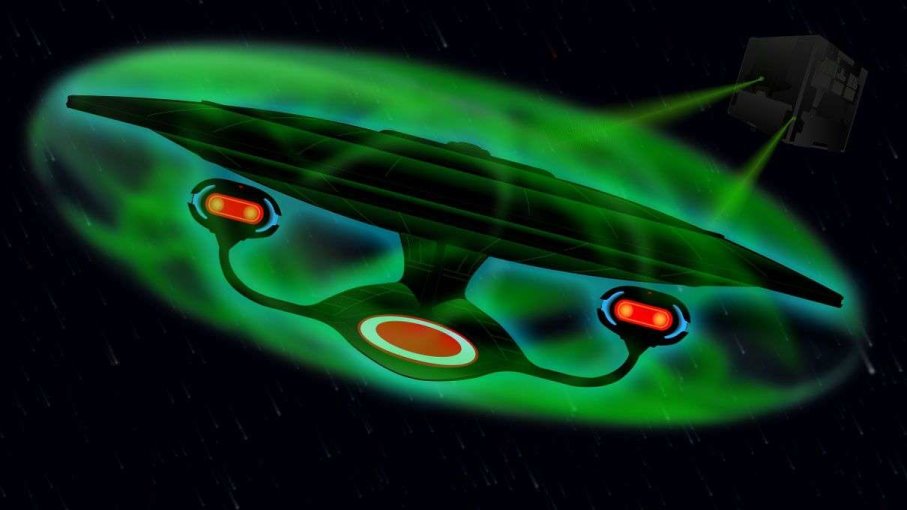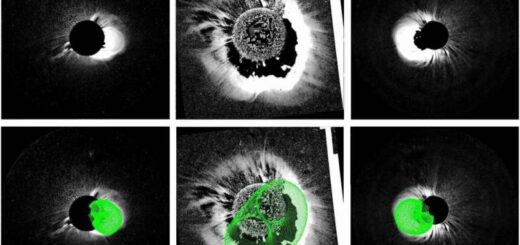Force Fields for Spacecraft Coming to a Galaxy Near You

Astronauts face myriad dangers in space, and at least one is perfectly familiar to the earthbound: cancer. The risk is so escalated that it stands firmly in the way of deep-space exploration. A European Union-funded research group is working to fix that.
The European Space Radiation Superconducting Shield project, comprising scientists from seven European research organizations, is developing a force field.
Technically, it’s a superconducting magnetic shield. Scientists want to surround a spacecraft with a magnetic field something like the magnetosphere that surrounds Earth, which helps protect the planet from the cosmic rays that bombard astronauts in space.
Advertisement: 0:13
Cosmic rays, the ones that gave the Fantastic Four their superpowers, are highly energized, charged subatomic particles. They include solar energetic particles expelled by solar flares and galactic cosmic rays produced by events like supernovas. Galactic cosmic rays are the most problematic in the radiation context. Speaking to Wired in 2014, Dr. Francis Cucinotta, a health physics professor with the University of Nevada, Las Vegas, said among radiation types, galactic cosmic radiation creates especially aggressive tumors.
To keep cancer risks down, NASA caps mission durations to roughly five months. A quick trip to Mars and back would take at least 16 months.
Inset
Illustration of a force field surrounding the U.S.S. Enterprise
HOWSTUFFWORKS
Spacecraft currently have shielding, but it’s the passive type, according to Dr. Amalia Ballarino, a project scientist from consortium member CERN, the European Organization for Nuclear Research.
“Spacecraft are built with specific materials that mitigate the effect of radiation,” writes Ballarino in an email. However, passive shielding isn’t effective against the most damaging radiation sources. Galactic cosmic rays, which originate beyond our solar system, move so fast these shields can’t stop them.
The Space Radiation Superconducting Shield, or SR2S, is an active-shielding approach. It would use superconducting magnets to generate a magnetic field 3,000 times stronger than the one protecting Earth. Magnetic fields alter the paths of charged particles. SR2S would create a 30-foot (10-meter), cosmic-ray-deflecting force field around a spacecraft.
“The magnet system must be light and stable,” says Ballarino. “Different magnets and coil configurations have been studied.” Scientists developed a specific conductor for the application, titanium-clad MgB2. The resulting magnetic shield wouldn’t block everything, but it would reduce an astronaut’s radiation dose to what Ballarino calls “acceptable levels,” making deep-space travel ethically possible.
Closer to Home
The success of active shielding also has broader implications. NASA limits astronauts to a 3-percent increase in their risk of dying from cancer. Once they’ve absorbed enough cosmic radiation to meet that limit, they can’t go back to space (on NASA’s dime, at least). Ineffective shielding dramatically shrinks the pool of candidates who qualify for certain mission types.
It also promotes a gender bias in candidacy. Women have a lower radiation threshold than men due to the unique risks associated with breast, uterine and ovarian cancers. This means women meet the 3-percent mark faster than their male colleagues. Women are automatically out of the running for up to half of all missions due to anatomy.
The SR2S project expects to demonstrate the viability of the superconducting magnetic shield by the end of 2015, says Ballarino, which is when the project ends. If successful, project literature estimates real-world implementation within 20 years.



 Creators of mankind
Creators of mankind Description of “Tall white aliens”
Description of “Tall white aliens” Where they came from?
Where they came from? About hostile civilizations
About hostile civilizations The war for the Earth
The war for the Earth “Tall white aliens” about eternal life
“Tall white aliens” about eternal life Video: “Nordic aliens”
Video: “Nordic aliens” Aliens
Aliens Alien encounters
Alien encounters The aliens base
The aliens base UFO
UFO Technology UFO
Technology UFO Underground civilization
Underground civilization Ancient alien artifacts
Ancient alien artifacts Military and UFO
Military and UFO Mysteries and hypotheses
Mysteries and hypotheses Scientific facts
Scientific facts


















